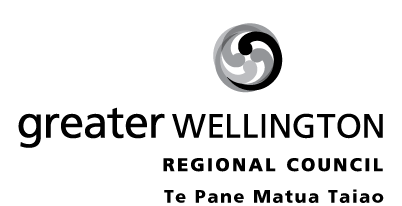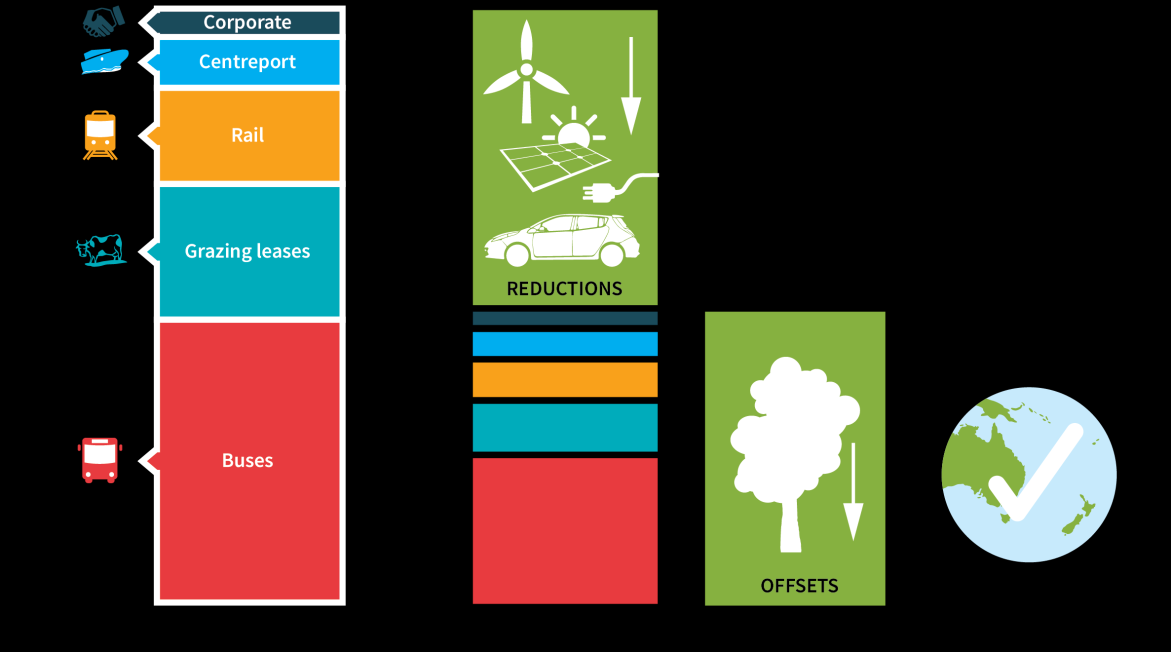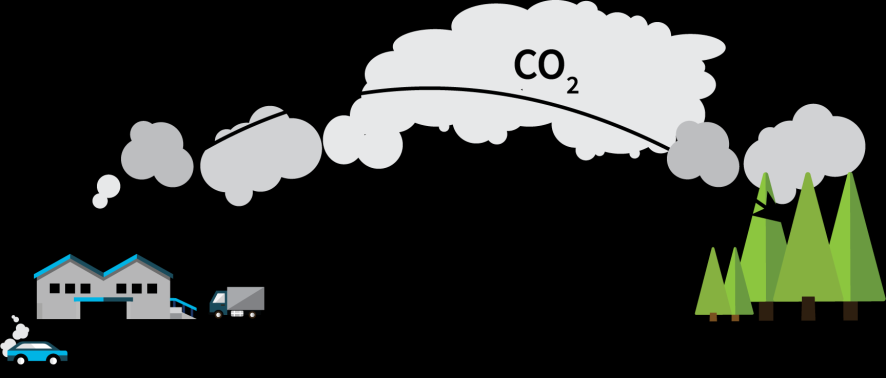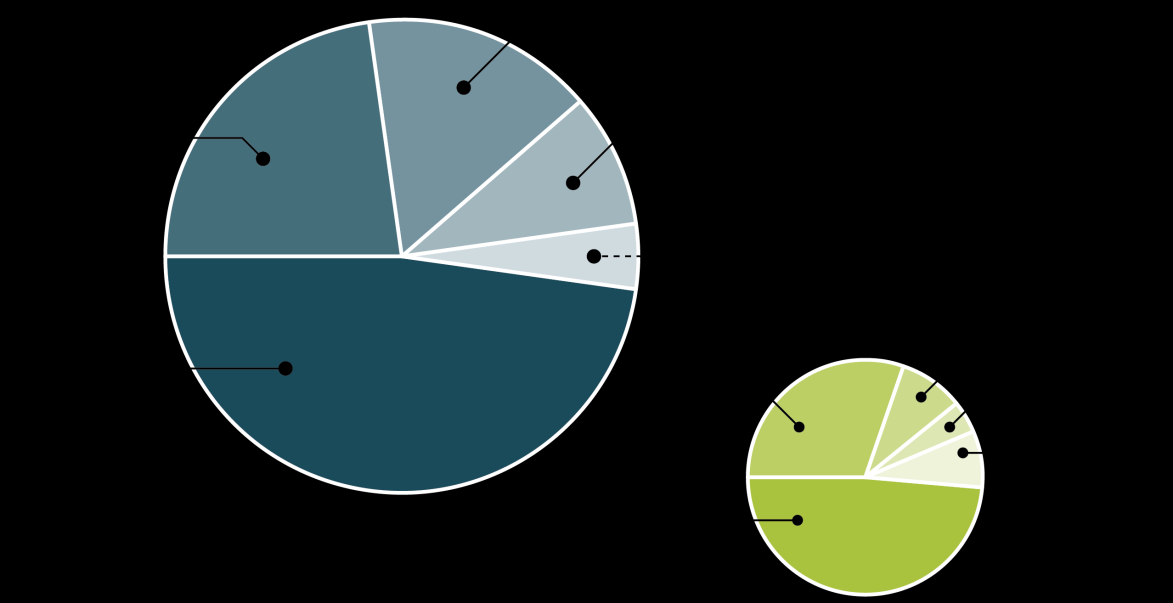 Report
19.364
Report
19.364
Date
12 August 2019
File
CCAB-8-2413
Committee
Council
Author
Jake Roos, Climate Change Advisor
Setting a carbon neutrality target for GWRC
1.
Purpose
To seek approval to set a target for Greater Wellington Regional Council
(GWRC) as an organisation to become ‘carbon neutral’.
The report also outlines the costs of inaction and an initial plan of action to
accelerate progress on carbon reduction and carbon sequestration in line with
this target.
2.
Background
The Government has expressed an ambition for New Zealand to have net zero
greenhouse gas emissions (or become ‘carbon-neutral’, as it is also known) by
2050, reflecting the goal of the 2015 Paris Agreement. It is working towards
passing the Climate Change Response (Zero Carbon) Amendment Bill that will
help give effect to this through putting a target of this kind in law. The Bill will
set a series of emissions budgets to act as stepping stones towards the long-
term target
and
require
national
emissions
reduction
plans.
The
Intergovernmental Panel on Climate Change warned in their special report in
October last year that unless global emissions drop steeply now, the
opportunity to avoid the worst effects of climate change will be lost.
Some organisations have already acted to either set carbon neutrality goals,
such as NZ Post and Christchurch City Council have for 2030, or achieved
them, such as the Warehouse Group. This reflects their desire to demonstrate
leadership on climate change and to reduce the related risks to their
organisations (of regulation of emissions, to their reputation and from climate
change itself).
Councillors discussed carbon trading and offsetting options within this context
at an Environment Committee workshop in October 2018. Councillors
expressed:
SETTING A CARBON NEUTRALITY TARGET FOR GWRC
PAGE 1 OF 10
* A desire to further explore carbon neutrality of its corporate emissions
footprint including offsetting, in full knowledge that this would present an
opportunity cost (from the foregone sale of emissions units) and potentially an
actual direct cost (to purchase additional units).
* A desire to explore increasing GWRC’s supply of emissions units by planting
forests on GWRC owned land.
* Acknowledgement that GWRC needs to work towards including their
suppliers' (bus contracts in particular) and potentially CCO emissions in
GWRC’s corporate carbon footprint.
More recently, the GW Councillor Climate Change Working Group has
discussed influencing and collaborating with CCOs (Wellington Water and
WREDA), investments (e.g. CentrePort Wellington) and supplier contractors
(bus and rail) to develop objectives relating to the measurement and reduction
of greenhouse gas emissions.
A second councillor workshop on corporate carbon neutrality and reporting
climate change related risks was held in March 2019. It was explained there
that while the types of actions that would lead to carbon neutrality and their
necessity were clear, providing definitive costing for them was not possible
given how quickly technologies were developing and that the future price of
carbon pollution could only be very broadly estimated. Setting a target based
now on science and values would provide a focus for effort, but there needed to
be a high level of buy-in to this throughout the organisation. The example of
the process NZ Post used to set their carbon neutrality target was given.
At the 9 May 2019 Environment Committee meeting it was agreed that in order
to set a carbon reduction or neutrality target for GWRC as an organisation, a
day-long workshop would be held, involving both councillors, executive
leadership and other staff working together to arrive at a consensus, following
the a process similar to that of NZ Post.
On 9 August 2019, this workshop was held. It was attended by nine
councillors, all of the executive leadership team, staff primarily responsible for
emissions producing or mitigating parts of GWRC’s operations, climate change
specialists and designated staff sustainability champions – 40 people
altogether.
It was facilitated by business journalist and sustainability commentator Rod
Oram. During the morning there were presentations from Mr Oram, Dr Alex
Pezza on the science of climate change, David Walsh and Dawn Baggaley of
NZ Post and James Palmer, CEO of Hawkes Bay Regional Council.
The final presentation of the morning was on GWRC’s carbon footprint,
opportunities, pathways, scenarios and costs. This content is summarised
below.
GWRC
PAGE 2 OF 10
 What is carbon neutrality?
What is carbon neutrality?
Put simply, carbon neutrality means achieving net-zero greenhouse gas
(‘carbon’) emissions for an entity for a given period. It is a voluntary activity
whereby an organisation takes responsibility for its carbon pollution. The
process involves:
Measuring the carbon footprint (also known as the entity’s annual greenhouse
gas inventory). This includes deciding what activities are within scope.
Verifying the carbon footprint using an independent auditor, so emissions
information is accurate and transparent to the public.
Reducing the carbon footprint, typically through improved energy
conservation and efficiency, moving from fossil fuels to renewable energy
sources and changing the type and intensity of land use. Other mitigation
approaches may also be possible. To avoid the rising cost of carbon for all
business, organisations need to continue to look for ways to change to low
carbon service delivery.
Offsetting the remaining carbon footprint. As it is very difficult to achieve
reductions of gross emissions to zero, offsetting is required. This is where
projects that absorb emissions (or avoid emissions occurring outside the
organisation’s boundary, e.g. in another business or a developing countries) are
undertaken to cancel out the entity’s remaining footprint. Both of these
activities are explained in the diagram below:
Figure 1: Diagram showing how reductions and offsets bring net emissions to zero. As reductions
take time to be achieved, the sooner carbon neutrality is sought, the greater the reliance on offsets
will be.
GWRC
PAGE 3 OF 10

 Figure 2: Simple carbon offsetting diagram. Carbon credits (also known as ‘emissions units’) are
Figure 2: Simple carbon offsetting diagram. Carbon credits (also known as ‘emissions units’) are
tradable units each representing a permit to emit one tonne of CO2 equivalent greenhouse gas
emissions.
What is GWRC’s carbon footprint?
GWRC’s carbon footprint in 2017-18 was close to 33,000 tonnes of CO2
equivalent, which is around 1% of the Region’s gross emissions. This includes
core corporate activities, bus and rail contracts, CentrePort Wellington, given
the nature of influence GWRC has over these. The emissions from the
livestock and fertiliser use on approximately 2,000 hectares of grazed park land
are included as this is GWRC managed land.
Figure 3: GWRC ‘group’ carbon footprint 2017-18
Of the five main areas of emissions, all except grazing emissions have
increased since 2015, in particular buses. Grazing emissions in parks declined
by 20% over the same period as land has been retired.
Emissions from GWRC-owned assets such as those Wellington Water manages
and the Wellington Stadium may also be included in its carbon footprint (e.g.
to meet a verified reporting standard), but sit outside this target-setting process
given the shared decision-making responsibility GWRC has with other board
members.
GWRC
PAGE 4 OF 10
What are the cost implications?
GWRC already possesses the following carbon credits:
Table 1: Carbon credits currently held by GWRC
Number of
Assumed
Estimated
carbon units
price
current value
held
Free allocation for
pre-1990 forests
322,873
$25.00 each
$8.07M
Permanent forests for
2008-17 period
67,213
$31.25 each
$2.10M
Total
390,086
$10.17M
440 hectares of GWRC-owned forest were entered into the Government’s
Permanent Forests Sinks Initiative in 2012, with carbon credits for them
claimed back to 2008. These forests have accumulated carbon at an average
rate of 6,700 tonnes per year, although this will start to slow. Carbon credits
from permanent forests currently attract a 25% premium compared to regular
credits. GWRC was also given a one-off allocation of credits for its pre-1990
forests. Free allocation credits are not recommended to be used for offsetting
because they do not represent additional removal of carbon dioxide from the
atmosphere.
Using carbon credits to offset has a direct or opportunity cost. Increasing
GWRC’s supply of carbon credits (through additional planting) would also
have a direct cost. However, reforestation on GWRC land is eligible for the
Government’s ‘One Billion Trees’ funding. If for any reason the credits
GWRC generates aren’t needed, they can be sold.
Regarding reductions, some measures will cost more than the status quo, others
less. This also depends on the time horizon in question as higher upfront costs
are often compensated for by lower ongoing costs (for example, electric
vehicles). Key technologies such as solar photovoltaic systems and batteries
are rapidly dropping in price, consistently faster than most forecasts. The
illustrative scenarios for GWRC’s future emissions include the cost of carbon
for an assumed future carbon price (either to voluntarily offset or to pay in a
mandatory compliance scheme) and the global social cost of the net carbon
pollution to that would occur to the given date. These are in
Attachment 1.
What are the benefits?
Reducing emissions now reduces the risk of having to make more rapid, more
costly, reductions in the future (i.e. because of regulation). High intensity
emission assets might become ‘stranded’ due to prohibitive operating costs or
outright bans. Reducing emissions sooner contributes to the collective global
effort to limit emissions and the amount of global heating. It reduces the risks
GWRC
PAGE 5 OF 10
involved in having to adapt to more severe and intense climate change impacts
later on.
Establishing new permanent native forests (for offsets) within the region will
have the additional benefits of reducing erosion, improved water quality,
improved biodiversity and public amenity. However it is important to note
though that reducing emissions needs to be prioritised over offsetting because:
Reduction measures are generally more cost-effective, often reducing
total cost over the whole life of the asset.
Forests stop absorbing net carbon once fully grown. Continuing to
offset this way means finding more land to plant. Suitable land will
become harder and harder to come by.
Carbon stored in forests must remain there indefinitely (centuries or
more) but they are vulnerable over long periods, to harvesting for
resource use and increasing threats as a result of climate change (exotic
pests, disease, wildfires, storms etc.)
Illustrative scenarios for GWRC
Three illustrative scenarios for the future of GWRC’s emissions were
developed to highlight what could be achieved for varying levels of ambition.
These are in
Attachment 2.
Two crucial determining factors for the overall level of achievement are the
electrification of bus services and the retirement of grazing leases. Conceivably
both of these emissions sources could be reduced by 90% by 2030, reducing
total GWRC emissions by 75% in concert with other measures. To be
successful, the rate of adoption of low emissions technologies and practices
must exceed the rate of growth by a large margin. All other things being equal,
organisational growth causes emissions to increase.
Consensus decision-making process
In the second half of the special workshop day, delegates participated in a
consensus building exercise. Given all they had heard in the first part of the
day, individuals were asked to specify what they personally thought GWRC’s
carbon emissions reduction target should be; how much (gross or net) and by
when. They could specify conditions, interim targets and provide further detail
as they saw fit. Then they were asked to partner with one other person, discuss
their respective targets and develop a consensus position together. The pairs
then joined to form a group of four and repeat the process, and so on. Rod
Oram and climate change staff played facilitation roles, rather than participate
directly. Finally, two groups of sixteen delegates presented their agreed targets.
Both groups had individually agreed the primary target should be that GWRC
become carbon neutral by 2030. There were slight differences in the supporting
detail each proposed that were resolved through a final group discussion. The
details agreed to recommend to council were that GWRC:
GWRC
PAGE 6 OF 10
Adopt an interim target of a 40% reduction in net emissions by 2025
(compared to 2018-19), increasing in a linear fashion to a 100%
reduction in net emissions (ie, be carbon neutral) by 2030, and
thereafter. As the targets are for net emissions, GWRC can use offsets
to make up the difference between reduction in gross emissions and the
targets if required.
Set ‘carbon budgets’ for the financial years ending in 2020 to2025 and
2026 to 2030 to track progress against and ensure that the council is on
course to achieve its targets.
Become ‘carbon negative’ by 2035. In practice this would mean that
GWRC would both be carbon neutral and be able to sell excess carbon
credits that it had generated from reforestation within the region.
Accelerate its programme of work towards the target by selling its ‘free
allocation’ carbon credits to create a dedicated funding stream, given it
is not recommended that they be used for offsetting.
A summary of the costs of inaction on climate change is also outlined in
Attachment 2. This was requested at Environment Committee on 9 May
2019.
3.
Comment
The recommended target is feasible and commensurate with that of other
organisations such as Christchurch City Council and NZ Post. The interim
targets will ensure that net carbon pollution is constrained prior to 2030 (which
is critical, as GWRC’s carbon emissions have risen sharply in recent years) and
the use of free allocation units for funding the changes required will limit any
impact on rates.
Based on the discussion and ideas collected during the 9 August workshop,
officers have developed an initial ‘Corporate Carbon Neutrality Action Plan’ to
move the organisation towards attainment of the 2030 target, should it be
adopted by Council:
1. Introduce a carbon reduction policy for the organisation. Decisions
must consider what impact they will have on the carbon target(s), with
a strong bias towards those options that will avoid, reduce or absorb
emissions. The carbon reduction policy will be reflected in procurement
policy.
2. Allocate responsibility for corporate carbon emissions and attainment
of the targets to the chief executive, with an associated performance
indicator.
3. Investigate securing renewable electricity supplies for GWRC
operations including via procurement, partnerships and/or direct
investment.
GWRC
PAGE 7 OF 10
4. Accelerate the implementation of an electric bus fleet in the region by
2030.
5. Adopt a target of a fully-electric corporate vehicle fleet by 2030 (if
mature technology is available).
6. Investigate and evaluate options for off-road and high performance
electric vehicles including through conversion, joint procurement or
partnerships with manufacturers.
7. Allocate resources to accelerate reforestation planting in regional parks,
plan future phases, secure external funding where possible and develop
agreements with DOC regarding acquiring carbon credits associated
with planting in Queen Elizabeth Park.
8. Review the future of grazing leases in regional parks as part of the
review of the Parks Network Plan and options to use this land for native
reforestation where appropriate to earn carbon credits.
9. Work with the Boards and executive of CCOs, in particular CentrePort
Wellington to align their level of ambition and programmes for
reducing emissions with that of GWRC.
10. Sell down the free allocation of carbon credits (NZUs) GWRC received
for its pre-1990 forests to create a ‘low carbon acceleration fund’ to
reduce the rates impact of this programme of work.
Further consideration and confirmation of these initiatives will form part of the
2020-21 Annual Plan process. Some of these initiatives may require further
feasibility assessment and consultation with our communities.
4.
Communication
As an outcome of this report a media release will be issued.
Formal communication with the Board of CentrePort Wellington and GW
Holdings Ltd will be required to indicate Council’s target and discussions held
with management on the implications for their business. In the cases of
WREDA, Wellington Water Ltd and the Wellington Stadium Trust, further
discussion with the other partner councils will be undertaken to communicate
GWRC’s position and to develop a jointly agreed approach on carbon
reduction goals. This will then need to be formally communicated to the
respective governance bodies.
5.
Consideration of climate change
The matters requiring decision in this report have been considered by officers
in accordance with the process set out in the GWRC Climate Change
Consideration Guide.
5.1
Mitigation assessment
Officers have considered the effect of the matter on the climate. Officers
recommend that the matter directly affects GWRC’s contribution to total
GWRC
PAGE 8 OF 10
greenhouse gas emissions. Should the targets be achieved, and assuming
annual emissions reduce linearly between now and the interim 2025 target, the
total greenhouse gas emissions from GWRC from July 2018 onwards will be
limited to approximately 231,000 tonnes in total with a global social cost of
$137 million.
These figures can be compared to the scenarios in Attachment 2 to explore
what level of impact other courses of action would have. For example under
Scenario A, cumulative emissions and global social cost to 2030 are 350,000
tonnes and $209M respectively. Emissions and their impact continue to amass
the later carbon neutral status is attained – for example if the neutrality target
was 2040, they would increase to 525,000 tonnes and $313M respectively
under Scenario A.
Officers note that the matter does affect the Council’s interests in the
Emissions Trading Scheme (ETS) and the Permanent Forest Sink Initiative
(PFSI), in that an increase in the area of land GWRC has in permanent forests
has been mooted, and the carbon credits from such forests are administered
through these schemes.
5.2
Adaptation assessment
Officers have considered the impacts of climate change in relation to the
matter. The issue of potential impacts of climate change on reforested areas,
affecting the carbon stored there, has been highlighted. More generally the
risks associated with climate impacts in relation to council taking action or not
have been explored in some detail, including in Attachment 1.
6.
The decision-making process and significance
Officers recognise that the matters referenced in this report may have a high
degree of importance to affected or interested parties.
The matters requiring decision in this report have been considered by officers
against the requirements of Part 6 of the Local Government Act 2002 (the Act).
Part 6 sets out the obligations of local authorities in relation to the making of
decisions.
6.1
Significance of the decision
Part 6 requires Greater Wellington Regional Council to consider the
significance of the decision. The term ‘significance’ has a statutory definition
set out in the Act.
Officers have considered the significance of the matter, taking the Council's
significance and engagement policy and decision-making guidelines into
account. Officers recommend that the matter be considered to have low
significance.
Officers do not consider that a formal record outlining consideration of the
decision-making process is required in this instance.
GWRC
PAGE 9 OF 10
6.2
Engagement
Engagement on the matters contained in this report aligns with the level of
significance assessed. In accordance with the significance and engagement
policy, no engagement on the matters for decision is required.
7.
Recommendations
That the Council:
1. Receives the report.
2. Notes the content of the report.
3. Adopts the following greenhouse gas (carbon) reduction targets for its
corporate operations and areas of direct influence, using the 2018-19 year
as a baseline:
40% net reduction in 2024-25 financial year
100% net reduction (carbon neutral) in 2029-30 financial year and
thereafter
Become a net producer of carbon credits (carbon negative) by the
2034-35 financial year
4. Agrees that organisational carbon budgets be developed to guide emission
reduction work and measure performance for the financial years ending in
2020 to 2025 and 2026 to 2030. The second budget will be equivalent to a
linear reduction in net emissions between the 2025 and 2030 targets over
the period.
5. Endorses the Corporate Carbon Neutrality Action Plan outlined in
Section 3.
Prepared by
Approved by
Approved by
Jake Roos
Luke Troy
Greg Campbell
Climate Change Advisor
Group Manager Strategy
Chief Executive
Attachment 1: Illustrative scenarios of future emissions pathways and costs for GWRC
Attachment 2: Discussion paper on the costs of inaction on climate change
GWRC
PAGE 10 OF 10



